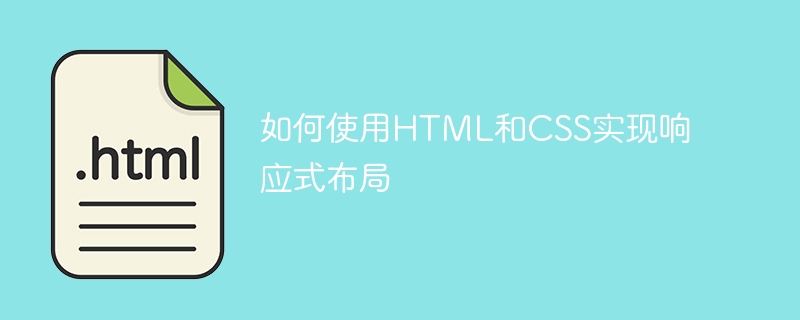

How to use HTML and CSS to implement responsive layout
In today's era of widespread mobile devices, responsive layout has become a front-end development skill that must be mastered. With the help of HTML and CSS, we can easily implement a web page layout that adapts to different screen sizes and window sizes. This article will detail how to implement responsive layout using HTML and CSS, and provide some specific code examples.
Media queries are an important feature of CSS3, which allow us to apply different CSS styles based on the characteristics and properties of the device. Through media queries, we can set different layout rules for different screen sizes and window sizes.
The following is an example of a simple media query:
@media screen and (max-width: 768px) {
/* 在屏幕宽度小于768px时应用的样式 */
}
@media screen and (min-width: 768px) and (max-width: 1024px) {
/* 在屏幕宽度在768px和1024px之间时应用的样式 */
}
@media screen and (min-width: 1024px) {
/* 在屏幕宽度大于1024px时应用的样式 */
}In the above example, we used the max-width and min-width attributes to specify different screen width ranges, and in Which defines the corresponding CSS style.
Fluid layout is a flexible layout method that can automatically adjust the size and position of elements according to the screen size. Compared to fixed layouts, fluid layouts can better adapt to different screen sizes and provide a better user experience.
The following is a simple fluid layout example:
<div class="container"> <div class="box">内容1</div> <div class="box">内容2</div> <div class="box">内容3</div> <div class="box">内容4</div> </div>
.container {
width: 100%;
}
.box {
width: 25%;
float: left;
}In the above example, the width of the container is set to 100%, and the width of the inner box element is set to 25%. In this way, no matter how the screen size changes, the layout of 4 elements per row can be maintained.
Flexbox layout is another powerful tool of CSS3, which provides a more advanced layout method. By using Flexbox layout, we can easily realize automatic adjustment of rows and columns, automatic distribution of spacing and other functions.
The following is a simple Flexbox layout example:
<div class="container"> <div class="box">内容1</div> <div class="box">内容2</div> <div class="box">内容3</div> <div class="box">内容4</div> </div>
.container {
display: flex;
flex-wrap: wrap;
}
.box {
width: 25%;
}In the above example, we set the display property of the container to flex and implement automatic line wrapping through the flex-wrap property. This way, even if the screen size is smaller, the elements will automatically resize to maintain 4 elements per row.
Summary:
By using media queries, fluid layout and Flexbox layout, we can flexibly implement responsive layout. In actual development, we can choose one or more of these methods to implement based on specific needs. At the same time, we can also use CSS preprocessors (such as Sass or Less) to implement responsive layout more efficiently. I hope the introduction and examples in this article can help you better master the responsive layout skills of HTML and CSS.
The above is the detailed content of How to implement responsive layout using HTML and CSS. For more information, please follow other related articles on the PHP Chinese website!